Naked Scientists Question and Answer Show
This week Drs Chris, Dave and Phil find out how a venomous spider has got scientists swollen with excitement because it's bite has Viagra-like properties, how maggots are fighting off MRSA from ulcers, and NASA are testing their next generation telescope aboard a jumbo jet. The docs also explore the science of getting geostationary satellites into space, the basis of bacterial intelligence, and how much water trees drink on a hot day. Plus, in kitchen science, Dave and Ben put their heads in a box... to find out how a pinhole camera works.
In this episode
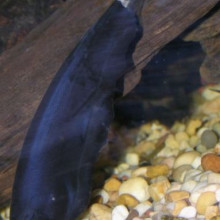
Sixth Sense for Submarines
Scientists would like to build robotic submarines that can be used in complex tight spaces such as coral reefs, wrecks, oil rigs etc. The problem is that to avoid crashing in these circumstances you need to be able to see objects coming at you from all directions.
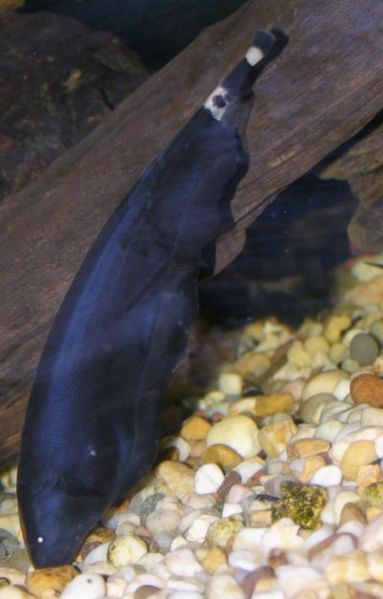 Malcolm Maclver and collegues at North Western University in Chicago have been inspired by weakly electric fish. These are a group of fish that live mostly in Africa and S. America which have a sixth sense. They are able to act a bit like a battery by passing current through the water around them, and they can then sense the voltage produced by this current with sensors in their skin. If there is something in the water which is either more or less conductive than the water, it will alter how the currents flow through the water and therefore alter the voltages sensed by the fish's skin. From these signals the fish will become aware of the object.
Malcolm Maclver and collegues at North Western University in Chicago have been inspired by weakly electric fish. These are a group of fish that live mostly in Africa and S. America which have a sixth sense. They are able to act a bit like a battery by passing current through the water around them, and they can then sense the voltage produced by this current with sensors in their skin. If there is something in the water which is either more or less conductive than the water, it will alter how the currents flow through the water and therefore alter the voltages sensed by the fish's skin. From these signals the fish will become aware of the object.
Malcolm has been building his own version and has sucessfully detected objects in water with only a few sensors. He hopes to use more in the future to study more complicated shapes and because the range is very limited he would like to use this sense on small agile mini-subs in the future.
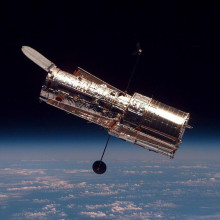
NASA’s flying telescope
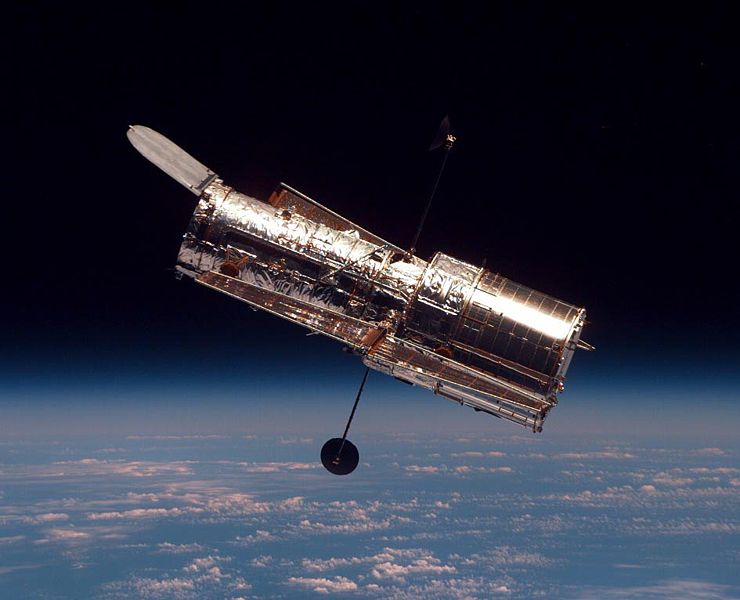 The atmosphere causes huge problems for astronomers; it blocks out certain types of light such as UV and x-rays, but turbulence in the air also bends an distorts images. This is what makes stars twinkle when any of us look up at the night sky and it's why astronomers designed the Hubble space telescope to orbit above the atmosphere. However NASA's latest endeavour to escape the atmosphere is a 20 tonne flying telescope. The telescope is called SOFIA and will actually sit inside a modified jumbo jet which will fly above 90 % of the atmosphere. However the telescope is positioned in the back of the plane and a section actually had to be cut out and replaced with modified parts to fit the telescope in. With the modifications and all that weight in the back no-one was quite sure how the jumbo jet would fly, but the first tests have just been performed and everything went well on a basic flight. Engineers still have to test how the plane will fly with the huge cargo doors open to allow the telescope to see out but if all goes well we'll have our first flying pictures from SOFIA in early 2008.
The atmosphere causes huge problems for astronomers; it blocks out certain types of light such as UV and x-rays, but turbulence in the air also bends an distorts images. This is what makes stars twinkle when any of us look up at the night sky and it's why astronomers designed the Hubble space telescope to orbit above the atmosphere. However NASA's latest endeavour to escape the atmosphere is a 20 tonne flying telescope. The telescope is called SOFIA and will actually sit inside a modified jumbo jet which will fly above 90 % of the atmosphere. However the telescope is positioned in the back of the plane and a section actually had to be cut out and replaced with modified parts to fit the telescope in. With the modifications and all that weight in the back no-one was quite sure how the jumbo jet would fly, but the first tests have just been performed and everything went well on a basic flight. Engineers still have to test how the plane will fly with the huge cargo doors open to allow the telescope to see out but if all goes well we'll have our first flying pictures from SOFIA in early 2008.
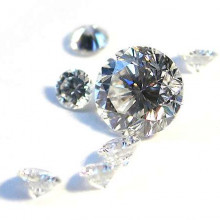
Diamonds Used to Probe Fundamentals of the Universe
One of the major ways of finding out about the universe is to smash particles together and look at what particles leave the collision. To do this amongst other things, such as monitoring nuclear reactors, you need to detect these particles.
The normal way of doing this is to get a piece of silicon where all the electrons are stuck to their atoms, so it doesn't conduct electricity well. If a particle hits the detector it will knock electrons off the silicon atoms, this increases the conductivity so will produce a pulse of current. This can then be detected.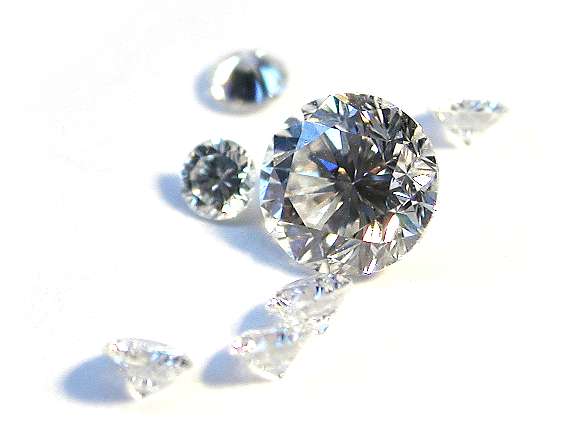
There are two main problems with silicon detectors - the silicon structure is not especially strong and can get damaged by the radiation; and it doesn't take very much energy to knock an electron off an atom, which means that it will happen all the time due to thermal vibrations. To minimise this the detectors have to be cooled to -200°C which can be difficult.
Diamond detectors have a solution: instead of using silicon, use carbon. Carbon is above Silicon in the periodic table so has similar properties, however it has to be in the form of very pure diamond to work. Diamond is renouned as being very strong, so the damage is less of an issue, and it takes more energy to knock an electron off an atom, so there is much less noise. So much less noise that you can run the detector at 100°C. Diamond detectors have been installed in the new Large Hadron Collider in CERN which should be operational by the end of the year.
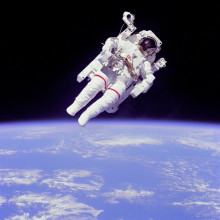
Can You Do Better Than NASA?
Ever thought you could do a better job than NASA? Well Peter Homer from Maine, in the US, did and he scooped a two-hundred-thousand dollar prize for his efforts.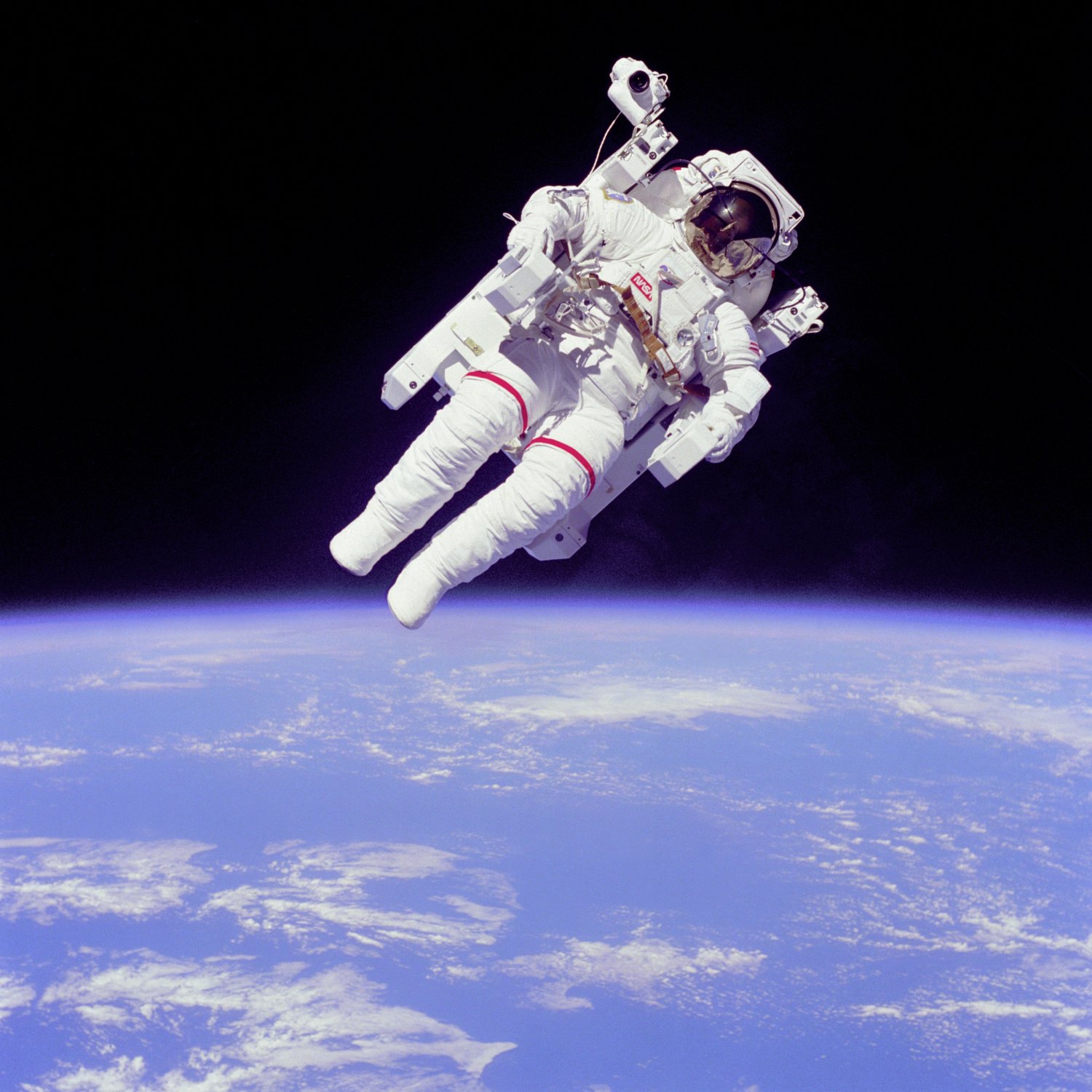
This was all part of a competition, run by NASA, to design a glove for a space suit that would out perform their own version. Space suit gloves are very important, because when astronauts are on space walks outside the international space station they need to be able to use tools to do service work such as power drills and screwdrivers or spanners, so they need to be flexible. They also need to be airtight and tough so they don't rip and let all the air out of the space suit. They also need to be well insulated to keep the astronaut's fingers warm. NASA's current design is rather bulky and stiff and astronauts who go on space walks for around 6 hours at a time often complain of bruised hands and fingernails bent back on themselves.
Homer's design used simple off the shelf materials such as surgeon's medical gloves and insulating and strengthening fabric bought from ebay. The final hand stitched glove was stronger and more comfortable than the NASA glove scooping the prize.
Unfortunately NASA won't be distributing the prize winning glove amongst the astronauts just yet. One thing NASA's gloves do have that Homer's doesn't is a super tough outer layer that protects the astronauts from tiny micrometeorites that could puncture the suit.
However if you feel that you can beat NASA then you haven't missed out yet. There are a series of competitions being run to encourage innovation and the next one is a competition to design a digger for use on the Moon, so get your thinking caps on.
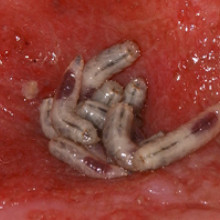
13:21 - Maggots and MRSA
Maggots and MRSA
with Professor Andrew Boulton, University of Manchester
Chris - A very exciting discovery was announced this week from scientists who are at the University of Manchester, and they've been exploring the question of how to tackle the problem of MRSA, or Methicillin Resistant Staphylococcus Aureus. Speaking with Chris Smith is one of the scientists behind that work is Professor Andrew Boulton, and he joins us to talk about it now...
Andrew - Well I'm a clinician and we treat a lot of diabetic patients with foot ulcers as a consequence of loss of sensation and vascular disease they can injure their feet. They're often infected and we treat them with antibiotics, but after treatment with routine antibiotics it's not unusual to get resistant organisms colonising the wound. We have been using for the last ten years or so Maggot or, if you prefer, Larvae therapy to treat these wounds and we observed a couple of years ago that a number of the MRSA infected wounds seemed to be cleared of this contamination by treatment with the larvae.
Chris - Is MRSA a major problem now in the community, because traditionally this was something which we had bred in hospital by wide scale use of antibiotics, and largely it was a hospital problem. Are you saying it's very much a community problem; there are people out there in their homes with it?
Andrew - Sure. MRSA is everywhere, basically, it was more common in hospitals but much of the MRSA we see now is community acquired.
Chris - Presumably it's therefore a problem to get rid of; you can't just throw antibiotics at these patients, as it's MRSA it's very difficult to clear.
Andrew - Absolutely, these are very resistant organisms to a number of the more regularly used antibiotics. MRSA develops because we've knocked out most of the sensitive organisms, so the challenge is how to remove this, as we've already published a paper some years ago showing that those wounds that are contaminated with MRSA are slower to heal.
Chris - So what did you actually do in the study to exploit the maggots?Andrew - Well the first study we did was an observational treatment of consecutive patients with MRSA colonised wounds with larvae therapy. We apply about 100 sterile larvae of the greenbottle fly to the wound, these stay on for about 3-5 days, they go on the size of a small grain of rice and they come off about ten times larger, the sort of maggot you could use for fishing tackle. We used about three to five applications of these and of thirteen consecutive patients, twelve were completely cleared out of the MRSA.
Chris - Why is that? What are the maggots doing that antibiotics won't do?Andrew - Well that's what we're working with our microbiologist to see. It does appear that the maggot is a bit like a magnet if you imagine the MRSA as iron filings, it appears to be attracted to the cuticle. We're also dissecting out larvae removed from wounds to see if they ingest them and we're looking at a number of possibilities to see if the substances they secrete, for example, kill off or at least stop reproduction of the bacteria.
Chris - So in other words the maggots' digestive juices (which they're squirting onto the tissue that they want to eat) are in some way also toxic to the bugs?Andrew - That's possible; it's been known for some time that these may have bacterial killing property. Of course the idea would be to take this further, to try and extract whatever it is that is active in the maggot that is killing the MRSA and perhaps to develop a treatment that doesn't require live maggots.
Chris - How did the patients feel about this, when you said to them "would you like us to fill your wound with maggots"?
Andrew - We don't quite say it just as you did, we explain that these have been used, literally for hundred of years in wound healing, and that they're bred in a sterile nature so they won't cause any problems. Most of our patients have nerve damage so they have no sensation in these wounds, so they're not aware of the larvae and the fact is that these really do remove and digest dead and necrotic tissue as well as infection so they're very good at cleaning wounds to allow healing to follow afterwards.
Chris - And when people do get the sensation of maggots in the wound, what do they say it feels like?
Andrew - Sometimes they're aware of a tickle, or 'pins and needles', or sometimes aware of minor movement, but it's difficult to know how accurate that description is, or if it is that they know that the maggots are there. Chris - So presumably now you would like to try this in not just diabetics but people with all kinds of wounds, and see if you have something which can attack MRSA in an effective way?
Andrew - Absolutely. I'm a diabetes specialist so we now have a grant to do a proper trial because this is suggestive and not proof. In medicine we need absolute proof from a randomised control trial so we're about to start a trial where we randomise patients to either have Larvae therapy or another, more conventional treatment, to confirm our initial observations.
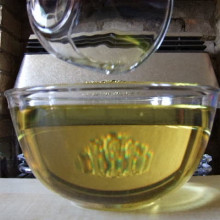
Why did my pyrex bowl suddenly break?
Pyrex expands when you heat it, and if it's heated for long enough it will expand all the way through.
When it cools suddenly, such as when you opened the microwave door, the outside of the Pyrex dish will shrink before the inside does. This will put the outside of the dish under tension, as it will be pulled apart by the expended Pyrex in the middle of the dish.
If there are any cracks in the outside of the dish, such as scratches or damage built up over many heat/cool cycles, this crack can travel through the dish and the tension in the surface can be released as a great big crack, and the plate will split.
This can be quite explosive, as the forces involved are immense, similar to the forces involved in water expanding as it freezes, which can blow cast iron pots apart and erode mountains. These forces should be more than enough to make the dish fly apart.
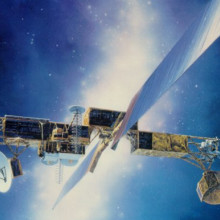
How high are geostationary satellites?
The height for geostationary orbit is about 22,300 miles, sitting directly above a fixed point on the equator. They get to that height by being attached to the top of a rocket and launched at incredibly high velocities.
It's taken years of practice to program the fine detail of controlling this into a computer, and small thrusters mounted on the satellite itself are used to manoeuvre the satellite into exactly the right orbit.
Drifting from the desired point is caused by the influence of the moon, and also by the fact that the Earth is not a perfect sphere. Small thrusters are used again to keep the satellite in the right orbit.

27:26 - Science Update - IQ Is Overrated
Science Update - IQ Is Overrated
with Bob Hirshon and Chelsea Wald
Bob - These question and answer shows always make us at Science Update marvel at the incredible raw braininess of Dr. Chris. In fact, we're a little jealous. But this week we have some stories that make us feel just a bit better. It turns out that having a high IQ isn't always what it's cracked up to be. First, Chelsea's here to tell us why that's true in formal education.  Chelsea - Kids need more than just high IQs to do well in school. In fact, kids' ability to regulate their thinking and behavior may be more important--especially when they're young. This is from developmental psychologist Clancy Blair of Penn State, who studied students in the US national preschool program Head Start. He found that kids who could best control their impulses, attention, and emotions did better on academic tests--especially in math. He says unlike innate intelligence, this is something kids can get better at with practice--and help. Clancy Blair (Penn State University): You know, I would say to a parent: You want your child to do well in school? Don't worry so much about intelligence. Really think about your child's ability to be well-regulated in the classroom.Chelsea - He says this suggests that if schools want kids to learn facts, they need to teach these less tangible abilities first.Bob - Thanks, Chelsea. A new study shows that being smart may help you earn more, but it doesn't help you get rich. Author and economist Jay Zagorsky is at Ohio State University. Looking at decades of data on over seven thousand Americans, he found that generally, the higher your IQ, the bigger your paycheck. But there was no relationship between IQ and total wealth: in other words, your savings and assets minus your debts.Jay Zagorsky (The Ohio State University): One possible reason is that people say 'oh, I'm earning higher income; there's no reason for me to save right now. I can always earn higher income than say, other people. So whenever I need money, I can just earn it.Bob - Strangely, he also found that people with just slightly above average intelligence were the least likely to have financial problems, like bankruptcies, overdue bills, and maxed out credit cards - while both the dullest and the brightest got into more trouble. Chelsea - Thanks, Bob. Well, we hope that put you in your place, Naked Scientists. Next time, we'll summon up all our mental powers to tell you about your skin's natural defenses against infections and how bacteria in your stomach could help prevent asthma. Until then, I'm Chelsea Wald...Bob - ...and I'm Bob Hirshon, for AAAS, The Science Society. Back to you, Naked Scientists...
Chelsea - Kids need more than just high IQs to do well in school. In fact, kids' ability to regulate their thinking and behavior may be more important--especially when they're young. This is from developmental psychologist Clancy Blair of Penn State, who studied students in the US national preschool program Head Start. He found that kids who could best control their impulses, attention, and emotions did better on academic tests--especially in math. He says unlike innate intelligence, this is something kids can get better at with practice--and help. Clancy Blair (Penn State University): You know, I would say to a parent: You want your child to do well in school? Don't worry so much about intelligence. Really think about your child's ability to be well-regulated in the classroom.Chelsea - He says this suggests that if schools want kids to learn facts, they need to teach these less tangible abilities first.Bob - Thanks, Chelsea. A new study shows that being smart may help you earn more, but it doesn't help you get rich. Author and economist Jay Zagorsky is at Ohio State University. Looking at decades of data on over seven thousand Americans, he found that generally, the higher your IQ, the bigger your paycheck. But there was no relationship between IQ and total wealth: in other words, your savings and assets minus your debts.Jay Zagorsky (The Ohio State University): One possible reason is that people say 'oh, I'm earning higher income; there's no reason for me to save right now. I can always earn higher income than say, other people. So whenever I need money, I can just earn it.Bob - Strangely, he also found that people with just slightly above average intelligence were the least likely to have financial problems, like bankruptcies, overdue bills, and maxed out credit cards - while both the dullest and the brightest got into more trouble. Chelsea - Thanks, Bob. Well, we hope that put you in your place, Naked Scientists. Next time, we'll summon up all our mental powers to tell you about your skin's natural defenses against infections and how bacteria in your stomach could help prevent asthma. Until then, I'm Chelsea Wald...Bob - ...and I'm Bob Hirshon, for AAAS, The Science Society. Back to you, Naked Scientists...
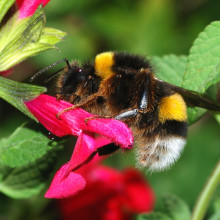
30:08 - Bees in trouble, Moving Mucous and Cucumber flavoured Tomato!
Bees in trouble, Moving Mucous and Cucumber flavoured Tomato!
with Richard Van Noorden, Chemistry World
Chris - It's time to join Richard Van Noorden from the Royal Society of Chemistry's Chemistry World magazine. Richard, last time you told us about why cars are grinding to a halt because of silicon in the petrol but this time, we've got a problem with beetles homing in on the smell of bees!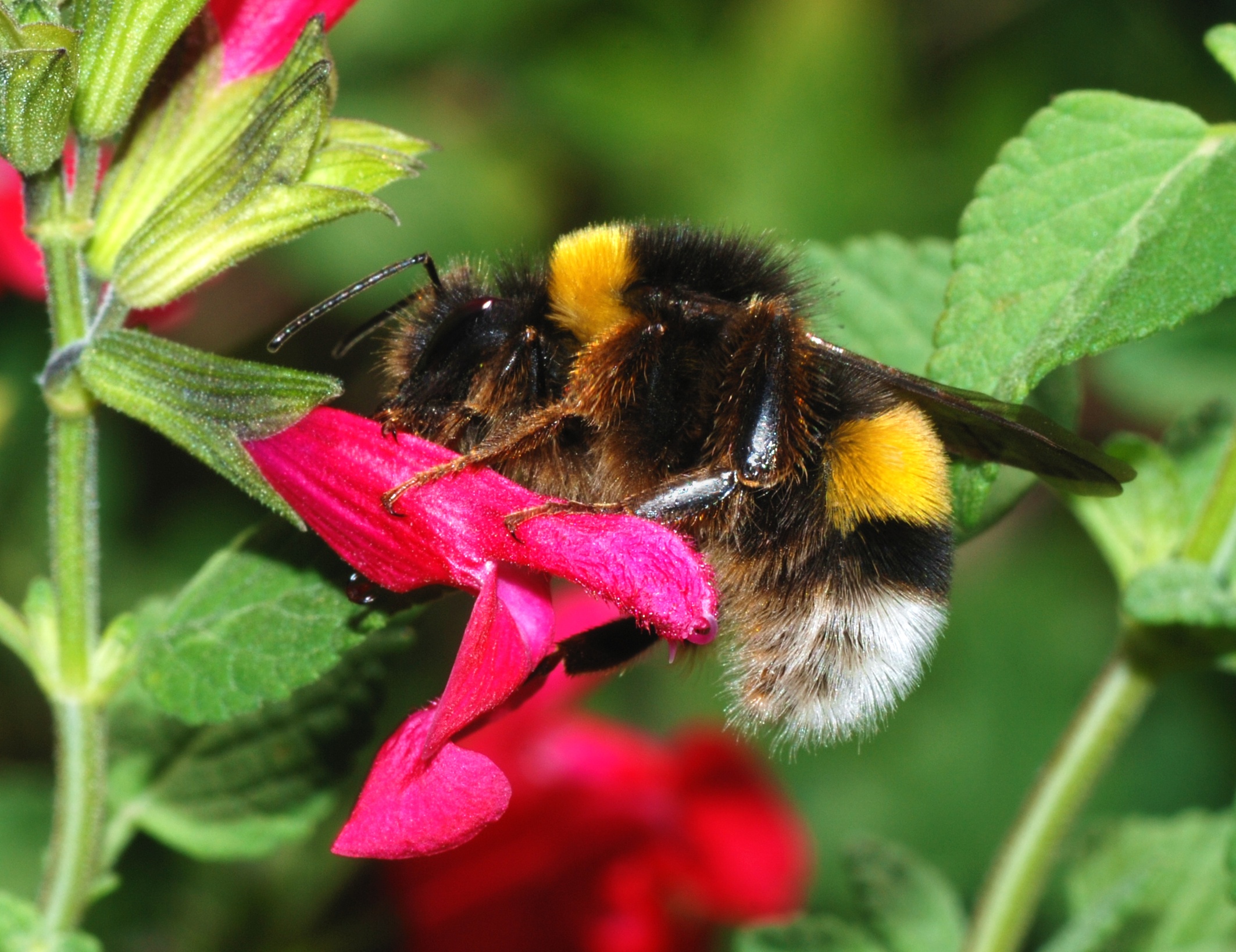
Richard - Well, the American and the European honeybees are having a real problem with the small hive beetle, which is successfully invading their colonies. When an invader comes in, the bee stings it and releases some pheromones, like an alarm system to tell other bees to come in as well. Now scientists at the University of Florida have found that the small hive beetle is more sensitive to this alarm pheromone than the bee itself, so they get there faster than the bees do in defense.
Chris - So what happens when the beetle goes into the hive? What does it do to the bees?
Richard - The problem for the bees is that the beetles' larvae feed and defecate on the honey and the bees will have to evacuate the hive. Also, to make matters worse the researchers have found that the beetles carry with them a yeast fungus that actively releases this same alarm pheromone, and because the beetle is more sensitive to the pheromone it actually helps the beetle.
Chris - So in other words it creates a hot-spot of the hive, because the fungus makes more of this chemical, you get more beetles being attracted to where there is a good supply of food and lots of beetles to mate with.
Richard - Yes. There is no problem for the African bee, but we don't know why yet. This might also be linked to the mysterious disappearance of entire bee colonies in north America and Europe this winter.
Chris - The Varroa mite has also been implicated in the destruction of north American bee colonies.
Richard - Yes, well no one knows what's going on there. Things like mobile phones, pesticides and poor bee keeping practices have all been called into account but the jury is still out on this issue.
Chris - Now what about this business of how the lungs defend themselves?
Richard - This is something called the virtual lung project in North Carolina and they're trying to work out how the lung protects itself against invaders. You might know that the lungs have tiny hairs on the surface of each cell called Cilia, and these beat mucus along to guide the dirt from the lung passages. The researchers are trying to work out how these hairs can beat together in unison. Obviously they have computer models and they can also grow the Cilia in the lab, but in order to check some of their predictions they've actually made a little model of the Cilia, by pouring liquid polymer into a mould. They end up with these life sized, magnetic little hairs. They can then be made to beat just like Cilia if you wave a magnetic field under them.
Chris - Are there any other practical applications of this rather than just improving the theoretical understanding?
Richard - Yes, because they move fluid around they can be used to mix and move fluids in what's called the 'lab on a chip', where processes from the large scale chemistry lab are miniaturized on a small chip.
Chris - And lastly, I heard that once upon a time the humble tomato would have tasted more like a cucumber?
Richard - Well, possibly! Some Japanese researchers have been looking at ways of introducing some interesting traits into tomatoes. They crossed a cultivated tomato with a wild cousin, and the resulting baby tomato appears to have an enzyme which, in addition to making the compounds responsible for the flavour of tomatoes, it can also make the compounds responsible for the flavours of cucumbers and melons. The only problem is that when these compounds are found in things other than cucumbers and melon, they taste distinctly off!
Chris - Well, I suppose that's because we've got used to that particular chemical mix. We've grown tomatoes the way that we have in order to have the 'tomato' taste because that's what we like, so if you put something that shouldn't be there in that chemical combination, you end up with something that tastes distinctly strange.
Richard - That's right. It's possible that in the past, wild strains of tomatoes, which have far more genetic variations than our cultivated strains, could have had this enzyme able to make both types of chemical compounds. But these researchers are not trying to make tomatoes taste like cucumbers, they are, in fact, trying to avoid making them taste like cucumber. So the idea is; if you know what genes are responsible, and you are trying to introduce something else like a better colour, you can avoid accidentally putting in the cucumber gene, and spoiling the flavour!

Why does paper lift up when you blow across it?
If you blow air over a curved surface, it tends to stick to that surface; it's called the Coanda Effect. If the surface, in this case the paper, is bending downwards, it will pull that air downwards with it.
If air (black) is blown over a curved piece of paper it will tend to stick to the paper, to do this the paper must be pulling it down (blue) so the air must push the paper up (red)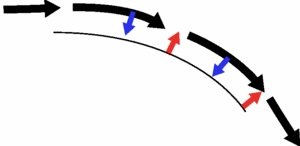
If you push something, it pushes you so if the paper is pushing the air down, the air will push the paper up.
This is exactly the same principle as is used in aeroplane wings; they push air downwards, so the air pushes them up.
The Coanda Effect can also be seen in a 'Bernoulli blower', or by putting a table tennis ball in the air flow from a hairdryer. The air going past each side pushes on the ball, and these forces keep the ball in the stream of air.

Why is scratching on a blackboard so nasty?
Even imagining these sounds can make your spine tingle. We're not certain exactly why people react to these sounds, but some research has been done by playing these sounds to volunteers (lucky them!). It was found that there is a frequency response to this, so when you play sounds of a certain frequency it elicits the spine-tingling, I-really-cant-stand-that, awful sensation. It's suggested that these frequencies are similar to those produced by an animal that is in distress, so the researchers think that we are tuned to be sensitive to these sounds, so that we pick up on when there might be danger around, and can be primed to react.
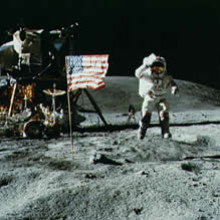
How did apollo missions slow down in space?
This is all based on rockets and thrusters. The moon landing was done by going into orbit around the moon, and then a small command module detached and went down to land on the surface, using thrusters to control the speed and angle of descent.
In the rocket or thruster, it pushes gas out of the rocket, so the gas pushes the spaceship in the other direction.
Actually, there was a hair-raising moment during Neil Armstrong's moon landing. The landing is usually all computer-controlled, but he realised that they were going to land in a boulder field, which would basically cause them to crash. He took manual control away from the computer, and landed safely with only 16 seconds of fuel left.
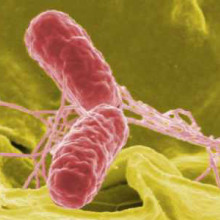
Are bacteria intelligent?
Bacteria have no brain, but on the surface of a bacterial cell there are receptors for different chemicals.
This means that they can tell which way to travel by comparing, chemically, how many of those receptors have things that they like - or dislike - attached.
The bacteria assume that the side with the most 'good' receptors filled is closest to their food. They use this as a guidance mechanism to control where they go.
Bacteria travel towards desirable chemicals, or away from toxic ones, using a tail called a flagellum. This is like a propeller, powered by a protein 'motor'.
When the 'motor' burns energy it causes the protein to change shape, quickly spinning the long 'tail' part. This lets bacteria move so quickly that one species - Bdellovibrio - are officially the world's fastest swimmers, travelling up to sixty times their body length in each second!
Why can a microwave be metallic?
The exact dimensions of the metal lining in your microwave oven are 'tuned' to the frequency of the magnetometer to reflect the microwaves back and forth and create an even electromagnetic field inside by creating a 'standing wave'. Putting other metal in the oven will cause other reflections, which can bounce back into the magnetron (which created the microwaves) and cause an explosion. Also, the radio waves cause an electric current to run through metal, if two pieces of metal are close together, then this can result in the electric current jumping between them and causing an electric arc which looks a bit like lightning.
Where does a tree's water come from?
60 gallons per hour is a lot of water. But it's estimated that a big tree, such as a 48 foot maple has on average 177,000 leaves, which adds up to a leaf area of 1/6 of an acre. Each leaf has thousands of tiny pores called stomata on the underside which open up on a nice day and lose water. They need to do this to pull water up through the roots into the stem and up to the leaves, in a process called transpiration. All this water must come from ground water, water stored underground.
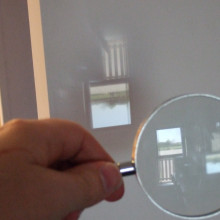
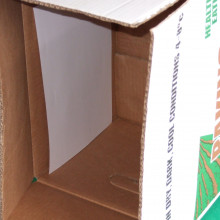










Comments
Add a comment